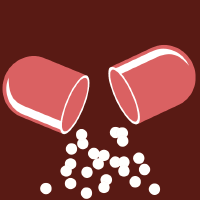Topic Editors


Challenges and Future Prospects of Antibacterial Therapy
Topic Information
Dear Colleagues,
Widespread antibiotic resistance has become one of the most serious global health threats in recent years and is much worse after COVID-19. This phenomenon has increased both mortality and morbidity as a consequence of treatment failures and its effect on healthcare costs. The misuse and overuse of antibiotics in human therapies, as well as for other areas, has resulted in the rapid emergence of multidrug-resistant (MDR) pathogens. However, new developments of novel therapeutics against MDR bacteria are still challenging. In this topic, we aim to collect studies on the most recent advances in the development of novel biocompatible antimicrobials and strategies against emerging MDR pathogens concerning design, fabrication, biocompatibility, and applications. Manuscripts will be accepted either in the form of research or review articles for all areas of antibiotics or antimicrobial materials.
Prof. Dr. Kwang-sun Kim
Dr. Zehra Edis
Topic Editors
Keywords
- antibiotic resistance
- synergistic antibiotics
- nanoantibiotics
- multidrug-resistance pathgens
- outermembrane vesicles
- photothermal therapy
- biocompatibility
- bacterial small RNA
Participating Journals
| Journal Name | Impact Factor | CiteScore | Launched Year | First Decision (median) | APC | |
|---|---|---|---|---|---|---|

Antibiotics
|
4.3 | 7.3 | 2012 | 14.7 Days | CHF 2900 | Submit |

Biomedicines
|
3.9 | 5.2 | 2013 | 15.3 Days | CHF 2600 | Submit |

Journal of Clinical Medicine
|
3.0 | 5.7 | 2012 | 17.3 Days | CHF 2600 | Submit |

Pharmaceuticals
|
4.3 | 6.1 | 2004 | 12.8 Days | CHF 2900 | Submit |

Pharmaceutics
|
4.9 | 7.9 | 2009 | 14.9 Days | CHF 2900 | Submit |

MDPI Topics is cooperating with Preprints.org and has built a direct connection between MDPI journals and Preprints.org. Authors are encouraged to enjoy the benefits by posting a preprint at Preprints.org prior to publication:
- Immediately share your ideas ahead of publication and establish your research priority;
- Protect your idea from being stolen with this time-stamped preprint article;
- Enhance the exposure and impact of your research;
- Receive feedback from your peers in advance;
- Have it indexed in Web of Science (Preprint Citation Index), Google Scholar, Crossref, SHARE, PrePubMed, Scilit and Europe PMC.

